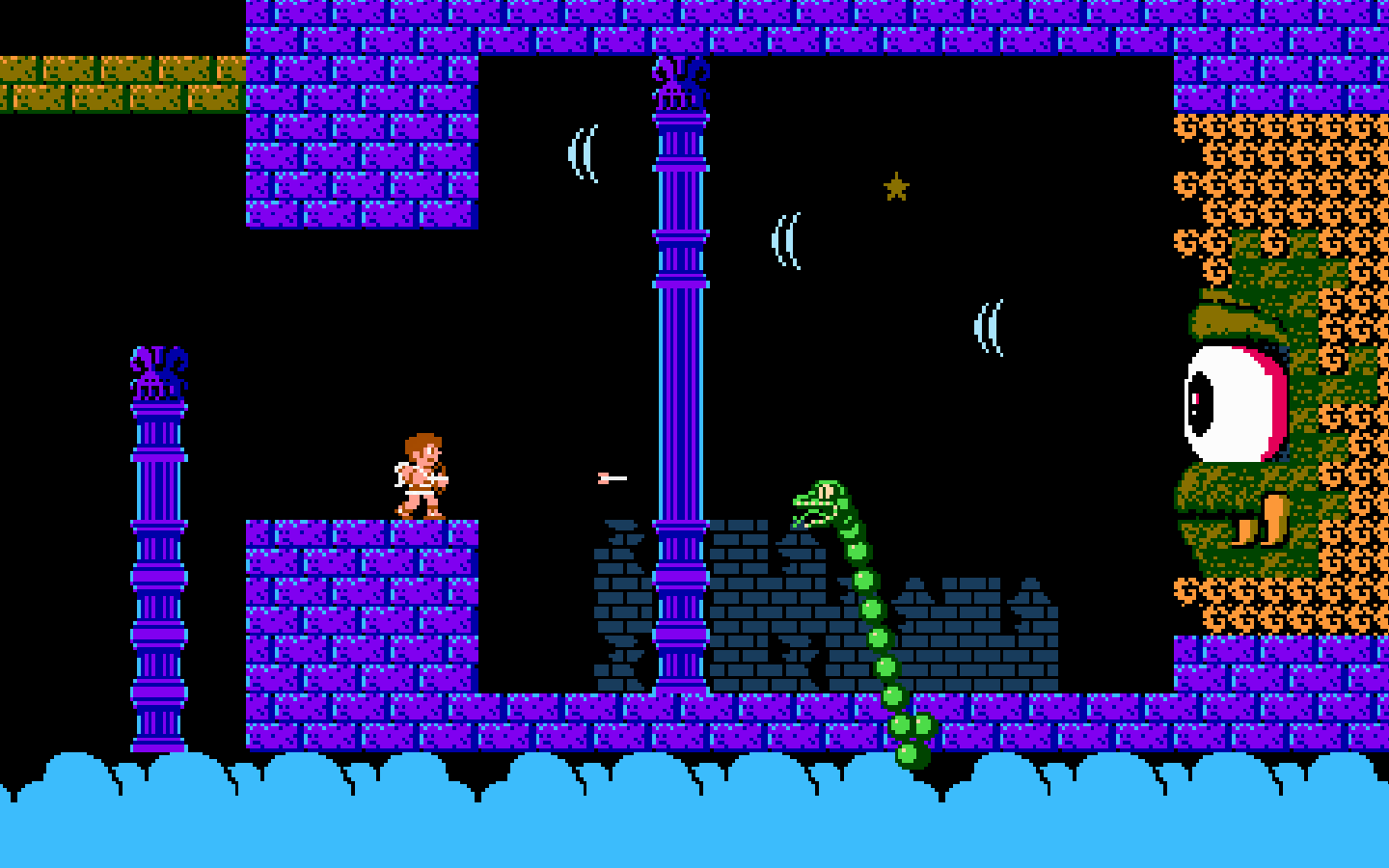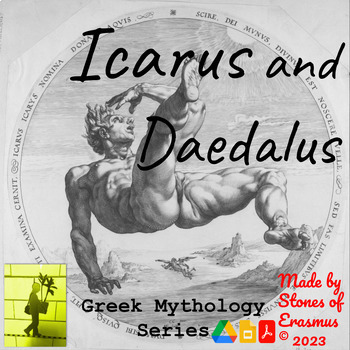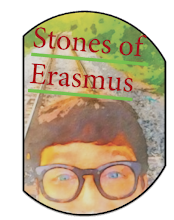|
|
| "Icarus" by Henri Matisse |
Visualizing the Story of Icarus in Art

|
| Image source: Icarus (from the Four Disgracers) by Hendrick Goltzius, 1588. |
At the Metropolitan Museum of Art in New York City, you can view Hendrick Goltzius’s engraving of Icarus from his series, “The Four Disgracers.” Here, Icarus is depicted plummeting, his body monstrous and his expression a blend of rage and regret. His father, Daedalus, is distant in the composition—still flying while Icarus is banished by the sun’s blazing glory. Goltzius captures the tragic moment, forever suspending Icarus between hope and doom.
In Célestin Nanteuil’s depiction, Icarus appears as a fallen angel—wings broken, body delicate, lying lifeless on the rocks beside the sea. Here, the tragedy is more peaceful, yet no less poignant.

|
| Kid Icarus from Nintendo |
The Origin Story of Daedalus Foreshadows the Fate of Icarus

|
| Film still from Jim Henson's "Storyteller" version of the Icarus myth |
What is the Moral of this Greek Myth?
Traditionally, the myth of Icarus is a warning: ignoring wise advice leads to disaster. But as storytellers like Henson suggest, the tragedy is also inherited—Daedalus’s own failings shape Icarus’s fate. It recalls the story of Abraham and Isaac, and the universal question: must the son pay for the sins of the father? This timeless myth invites us to imagine a different ending—one of redemption, not just ruin.
The Story of Icarus Resonates With Me Personally
The struggle for agency—breaking away from the nest—is a universal experience. From the Christian parable of the Prodigal Son to the modern classroom, we are all seeking both freedom and belonging. As a teacher, I’ve returned to this myth many times. My students always ask, “Why didn’t Icarus just use better glue?” A fair question!
Teaching the Myth of Icarus and Daedalus in Middle and High School
The myth of Icarus and Daedalus remains powerful for students today. I’ve created a classroom-ready 3-day lesson plan that you can use with any text version of the story, guiding students through close reading, visual analysis, and creative writing. Artistic retellings—from Goltzius to Nintendo—invite deep discussion and critical thinking.
Classroom Resource: Daedalus & the Labyrinth
Dive deeper into the myth with this interactive, standards-aligned resource!
Perfect for ELA and Humanities teachers, this lesson features readings, visual organizers, critical thinking questions, and creative writing prompts—all inspired by Daedalus and his legendary maze.
 Explore more resources for teaching mythology and literature at Stones of Erasmus on TpT!
Explore more resources for teaching mythology and literature at Stones of Erasmus on TpT!
- 3-day lesson plan (adaptable for 45-minute or 90-minute sessions)
- Comparative analysis of four works of art, including Goltzius, Nanteuil, “Dies” etching, and Bruegel
- Visual organizer for key characters and settings
- Exit tickets, comprehension questions, and critical thinking prompts
- Writing activity and editable Google Slides for blended learning
- Aligned vocabulary and further reading bibliography
Further Reading: Ten Useful Sources on the Myth of Icarus
|
(1) The Story of Icarus by Leanne Guenther (2) “Icarus and Daedalus” in Parallel Myths by J.F. Bierlein (3) Mythology by Edith Hamilton (4) Classic Mythology by Carl Witt (free on Google Books) (5) Animated Lesson on Daedalus and Icarus from Ted-Ed (6) Jim Henson Storyteller: Daedalus and Icarus (7) The Myth of Daedalus and Icarus by Ovid (via CommonLit) (8) Icarus Allusions (TV Tropes) (9) Kid Icarus (Nintendo) (10) Iron Maiden's "Flight Of Icarus" and Phish’s "The Squirming Coil" both reference the Icarus myth. |


Discover a contemporary version of "The Fall of Icarus" by a french artist.
ReplyDeleteThis myth symbolizes the tendency of man to always want to push the limits, but also embodies the symbol of human presumption in the face of nature. To discover on : https://1011-art.blogspot.com/p/icare.html
Thanks!
ReplyDelete